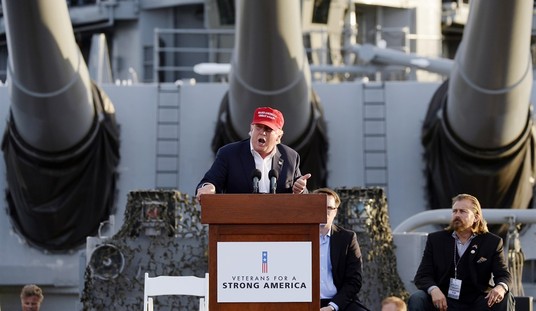
One of the subplots in the first two episodes of Mad Men’s third season (set in mid-1963) involves fictional ad agency Sterling-Cooper’s involvement with the firm that’s leveling Manhattan’s original Penn Station and building modern-day Madison Square Garden and an office high-rise on top of it. Given the folk Marxism (as Arnold Kling would call it) that’s lurking just under the surface of so much of the show’s writing, it seems safe to say that its producers view the nuking of the original 1910-era Penn Station as greedy businessmen and shortsighted developers run amok, along with a railroad that couldn’t care less about its passengers.
The reality, as I wrote back in 2005 over at Tech Central Station, when it appeared a long-delayed successor was on the immediate horizon, is a bit more complex, with plenty of blame to go across both political aisles, and private enterprise, government, and academia, combined:
Market Forces And Overregulation Demolished Original Penn Station
By the early 1960s, the virtually simultaneous building of the interstate highway system and the development of jet passenger aircraft seemed like doom for the railroad industry. Both greatly reduced the number of passengers transported by rail, but also, much of the freight that had once moved in boxcars, which was now being shipped via tractor-trailers on interstate highways. “There was very much a sense back then”, “that the railroad was obsolete as the horse-drawn carriage was in the 1930s or 1940s”, Matt Van Hattem, an associate editor of Trains magazine recently told me. “I think that there were some people who thought that the railroads would simply go away; there didn’t seem to be much use for them back then”.
The exception was short-haul commuter trains coming in and out of major metropolitan areas, such as New York City. They weren’t going away anytime soon — and their passengers would have to disembark somewhere. “I think that the Pennsylvania Railroad at the time thought that some subterranean building would be just as suited to that purpose as anything else”, Van Hattem says.
At the time, the PRR was hurting for cash, and looking for a suitor — it eventually merged in 1968 with its longtime archrival, the New York Central, in a disastrous shotgun marriage that would eventually be bailed out by the federal government’s creation of Conrail in 1976. But even prior to its merger, forced by government regulations (which wouldn’t be eased until the Staggers Act of 1980) to maintain unprofitable lines, as well as its passenger trains, the PRR was hemorrhaging money. At some point in the mid-1950s, its management realized that they owned an enormous building with the most desirable air rights on the planet — and began looking for a buyer who would exploit its space.
In the early 1960s, the Graham-Page Corporation announced their plans to build a new version of Madison Square Garden where Penn Station then stood. Ignoring protestors (picketing in suits and ties — this was the early sixties, after all), the wrecking ball first struck on October 28, 1963, and would take three more years to demolish the station, while leaving the tracks underneath available to commuters.
The current subterranean Penn Station, and Madison Square Garden sports arena, with a 29-story office building on top of it, was built in its place, opening in 1968. Penn Central, the PRR’s successor, would get out of the passenger business entirely in 1971, when Amtrak was formed by the federal government, to take long-haul passenger trains off the hands of the nation’s railroads. Meanwhile, government-run entities such as New Jersey Transit and New York City’s Metropolitan Transportation Authority took over commuter trains from Penn Central — and also into the hands of taxpayers.
Loathed From The Start
Right from the start, the current Penn Station was loathed by the public — and for good reason. As James Lileks recently wrote, “I hate Penn Station. I’d like to go back in time, drag the architects into the present, and ask them: what, you thought we would all be wearing George Jetson jumpsuits, queuing patiently for the Atomic Express? The reality is a waiting room with insufficient signage, a great hall that isn’t, and a Hudson News thronged with balding guys, ties askew, furtively paging through battered porn mags.”
This version of Penn Station represents the nadir of modern architecture. New York modernism was capable of great sophistication, as Mies van der Rohe’s iconic Seagram Building of 1958 demonstrated, as did the earlier Lever Brothers building across the street. But as the late Philip Johnson, who assisted Mies on Seagram has noted, too often the austerity of modernism was frequently an excuse for architecture on the cheap.
(End excerpt from Tech Central Station.)
The original Penn Station was opened in 1910 by a transportation corporation that dubbed itself “The Standard Railroad of the World.” Up until the end of World War II when it recorded its first loss, it certainly had the resources to back up such a potent claim — not the least of which was the ability to first tunnel, then run multiple lines of railroad track under the Hudson River. The exterior of the station was modeled after the Brandenburg Gate; its cavernous waiting room was inspired by the Roman Baths of Caracalla.
But the International Style of the 1920s-era Bauhaus design school, which the afore-referenced Philip Johnson tirelessly promoted as the early head of the Museum of Modern Art’s architectural department (when he wasn’t off playing the role of Zelig in what could have been a chapter in Jonah Goldberg’s Liberal Fascism), made direct classical references anathema.
As Tom Wolfe dubbed it, the goal of the far left in the 20th century was “Starting From Zero.” In terms of aesthetics, the Bauhaus utterly banished the past and such bourgeois concepts as ornamentation. In 1933 Hitler (the world’s most infamous frustrated architect, and also a big proponent of “starting from zero”) closed down the design school as “non-German”; it didn’t help that its interim headmaster between Walter Gropius and Mies van der Rohe was Hannes Meyer, an avowed Marxist.
During the mid-1930s, several of the Bauhaus’ most influential teachers, such as Mies, Gropius and Marcel Breuer, decamped to the United States, where they would lead design schools (Gropius and Breuer at Harvard; Mies at the Illinois Institute of Technology).
The extreme functionality and minimalism of Bauhaus-style architecture (“Sachlichkeit” in the original German) appealed to many industry leaders in the US. It was, by its very definition modern, even if its aesthetics were largely frozen around 1928, and at least appeared functional. After World War II, the International Style became the aesthetic equivalent of political correctness, with its design vocabulary seemingly always contracting, much like Orwell’s ever-shrinking Newspeak Dictionary of 1984. It bulldozed everything in its path — with often disastrous results — and from the end of World War II until the late 1970s, mocked those who resisted its aesthetics.
So when it came time to demolish the original Penn Station in the mid-1960s, ironically, commercial developers of the time had little choice but replace the original building with aesthetics based on Weimar-era socialist worker housing. Yale’s Vincent Scully famously wrote after the transformation was complete, “One entered the city like a god; one scuttles in now like a rat.”
As I said, the demolition of the original Penn Station was one of the great aesthetic crimes of the 1960s. But the seeds of its destruction were widespread, had been sowed decades earlier, and arguably unavoidable in its collision of a multitude of disastrously illogical forces. So far, Mad Men has greatly simplified its story, but as a key mid-1960s moment in the transformation of Manhattan, which would have remarkably widespread repercussions (not the least of which was the preservation of Grand Central Station), it’s a terrific choice as a subplot for the show’s third season.












Join the conversation as a VIP Member